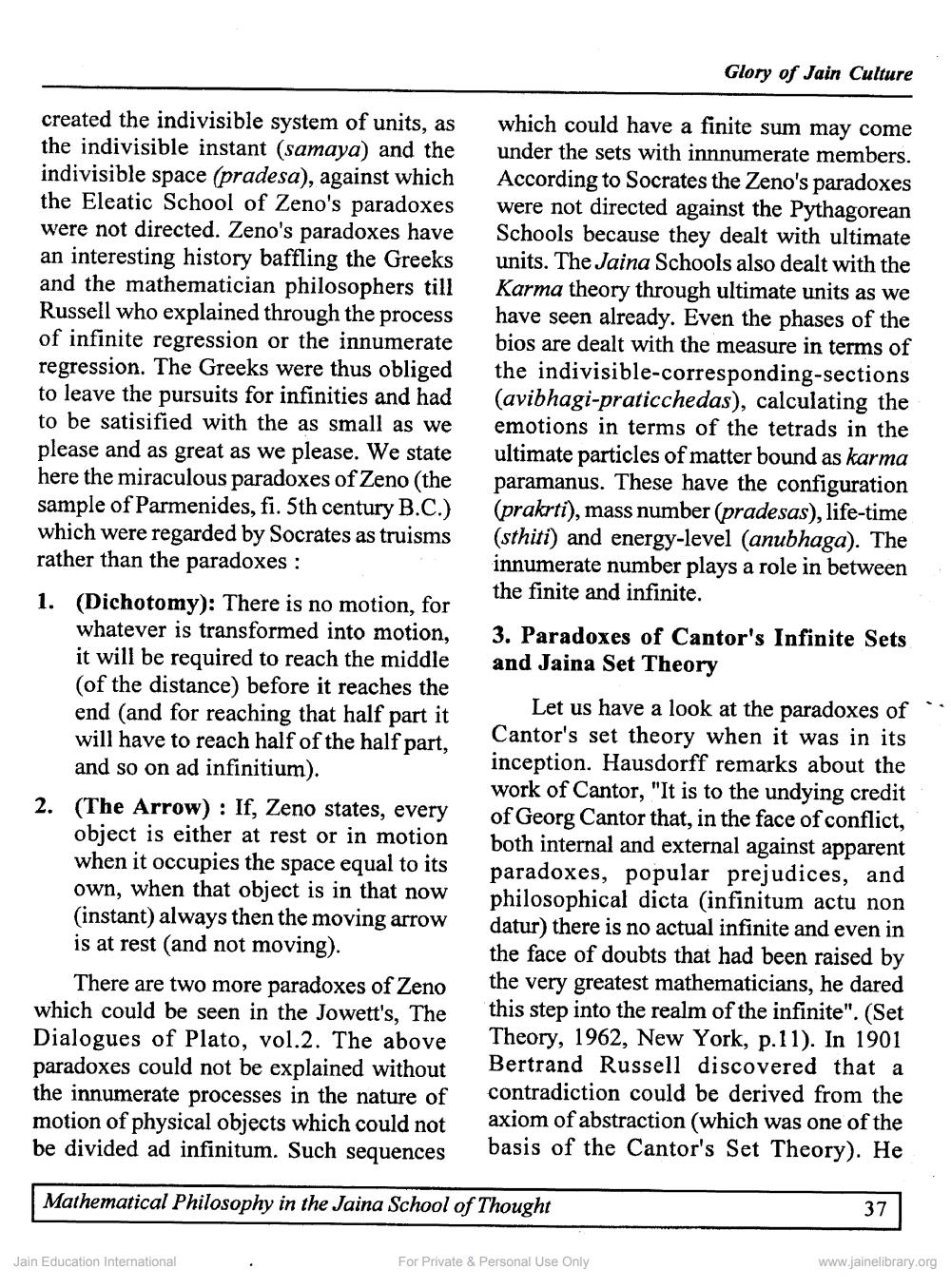Book Title: Mathmetical Philosophy in the jaina School of Thought Author(s): L C Jain, S K Jain Publisher: Z_Sumanmuni_Padmamaharshi_Granth_012027.pdf View full book textPage 3
________________ Glory of Jain Culture which could have a finite sum may come under the sets with innnumerate members. According to Socrates the Zeno's paradoxes were not directed against the Pythagorean Schools because they dealt with ultimate units. The Jaina Schools also dealt with the Karma theory through ultimate units as we have seen already. Even the phases of the bios are dealt with the measure in terms of the indivisible-corresponding-sections (avibhagi-praticchedas), calculating the emotions in terms of the tetrads in the ultimate particles of matter bound as karma paramanus. These have the configuration (prakrti), mass number (pradesas), life-time (sthiti) and energy-level (anubhaga). The innumerate number plays a role in between the finite and infinite. created the indivisible system of units, as the indivisible instant (samaya) and the indivisible space (pradesa), against which the Eleatic School of Zeno's paradoxes were not directed. Zeno's paradoxes have an interesting history baffling the Greeks and the mathematician philosophers till Russell who explained through the process of infinite regression or the innumerate regression. The Greeks were thus obliged to leave the pursuits for infinities and had to be satisified with the as small as we please and as great as we please. We state here the miraculous paradoxes of Zeno (the sample of Parmenides, fi. 5th century B.C.) which were regarded by Socrates as truisms rather than the paradoxes : 1. (Dichotomy): There is no motion, for whatever is transformed into motion, it will be required to reach the middle (of the distance) before it reaches the end (and for reaching that half part it will have to reach half of the half part, and so on ad infinitium). (The Arrow) : If, Zeno states, every object is either at rest or in motion when it occupies the space equal to its own, when that object is in that now (instant) always then the moving arrow is at rest (and not moving). There are two more paradoxes of Zeno which could be seen in the Jowett's, The Dialogues of Plato, vol.2. The above paradoxes could not be explained without the innumerate processes in the nature of motion of physical objects which could not be divided ad infinitum. Such sequences 3. Paradoxes of Cantor's Infinite Sets and Jaina Set Theory Let us have a look at the paradoxes of Cantor's set theory when it was in its inception. Hausdorff remarks about the work of Cantor, "It is to the undying credit of Georg Cantor that, in the face of conflict, both internal and external against apparent paradoxes, popular prejudices, and philosophical dicta (infinitum actu non datur) there is no actual infinite and even in the face of doubts that had been raised by the very greatest mathematicians, he dared this step into the realm of the infinite". (Set Theory, 1962, New York, p.11). In 1901 Bertrand Russell discovered that a contradiction could be derived from the axiom of abstraction (which was one of the basis of the Cantor's Set Theory). He Mathematical Philosophy in the Jaina School of Thought 37 Jain Education International For Private & Personal Use Only www.jainelibrary.orgPage Navigation
1 2 3 4
